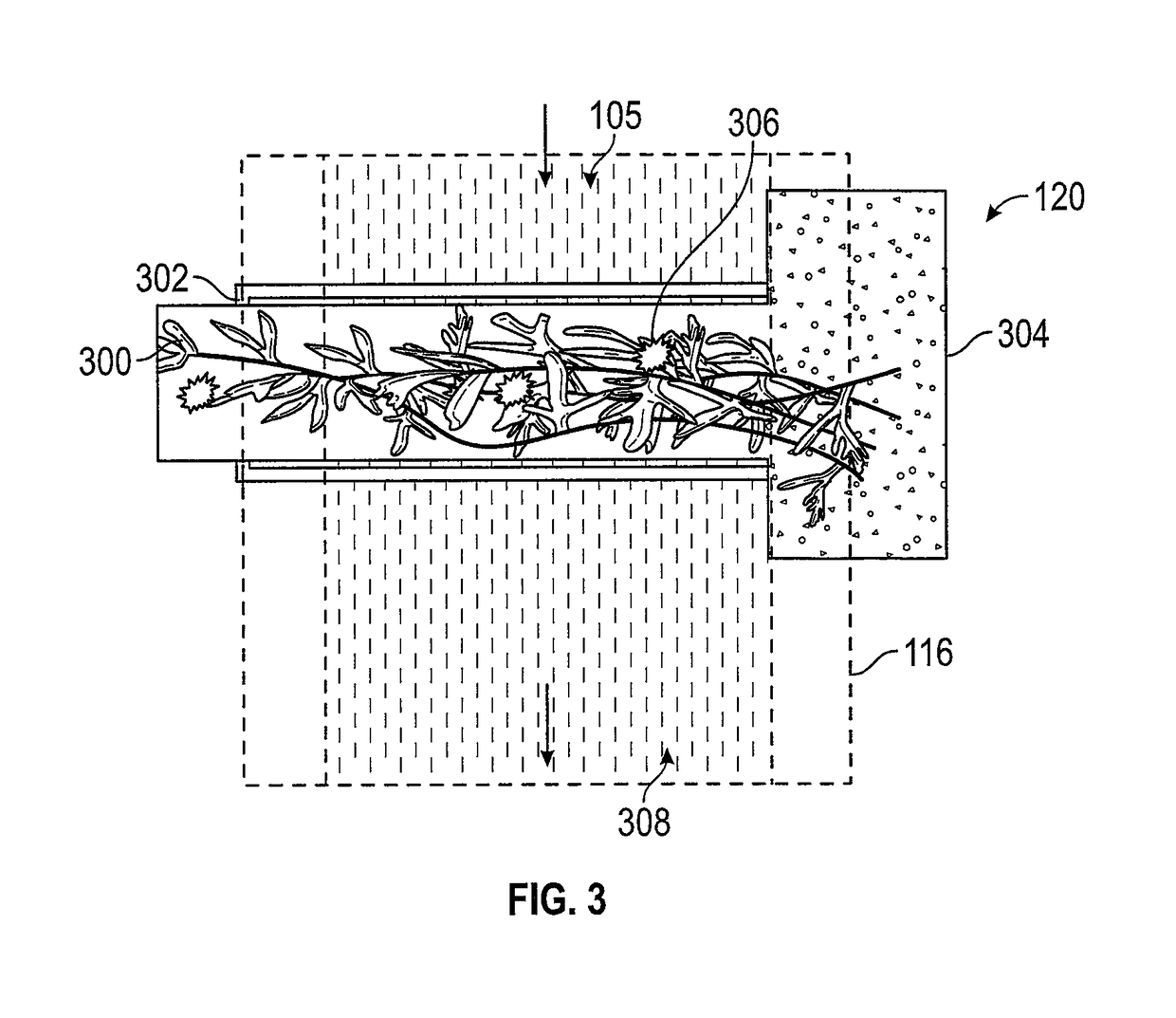Water quality detection, separation and recycling system and method
a water quality detection and water recycling technology, applied in the field of water recycling, can solve the problems of spoiled water sources, high cost of treatment of more supplies, and people's choice of extreme waste of energy, and achieve the effect of less gray water and reduced energy
- Summary
- Abstract
- Description
- Claims
- Application Information
AI Technical Summary
Benefits of technology
Problems solved by technology
Method used
Image
Examples
Embodiment Construction
[0019]With reference to FIG. 1, there is seen an integrated water separation and delivery system 100 of the present invention. In this example, a bathroom sink 101 is used to demonstrate the function of the system. In other examples, the system of the present invention is integrated with showers or other types of sinks or drains. The system includes a sensor tank or housing 102 housing one or more sensors 110n of a sensor system 110 and located under the sink 101, a diverting valve 112 in communication with a control system / controller 114, the controller including a logic board / logic array, a water tank 116 with a filter such as bio filter 120 attached to collect clean water and an ultraviolet light system 122 having ultraviolet light sources 123 to kill unwanted bacteria in collected water. Drain water 106 passes through a drain 104 into an inlet 103 of the sensor housing 102 where one or more sensors 110n senses a water characteristic. The controller 114 receives sensor data and g...
PUM
| Property | Measurement | Unit |
|---|---|---|
| temperature | aaaaa | aaaaa |
| temperature | aaaaa | aaaaa |
| turbidity | aaaaa | aaaaa |
Abstract
Description
Claims
Application Information
 Login to View More
Login to View More - R&D
- Intellectual Property
- Life Sciences
- Materials
- Tech Scout
- Unparalleled Data Quality
- Higher Quality Content
- 60% Fewer Hallucinations
Browse by: Latest US Patents, China's latest patents, Technical Efficacy Thesaurus, Application Domain, Technology Topic, Popular Technical Reports.
© 2025 PatSnap. All rights reserved.Legal|Privacy policy|Modern Slavery Act Transparency Statement|Sitemap|About US| Contact US: help@patsnap.com



